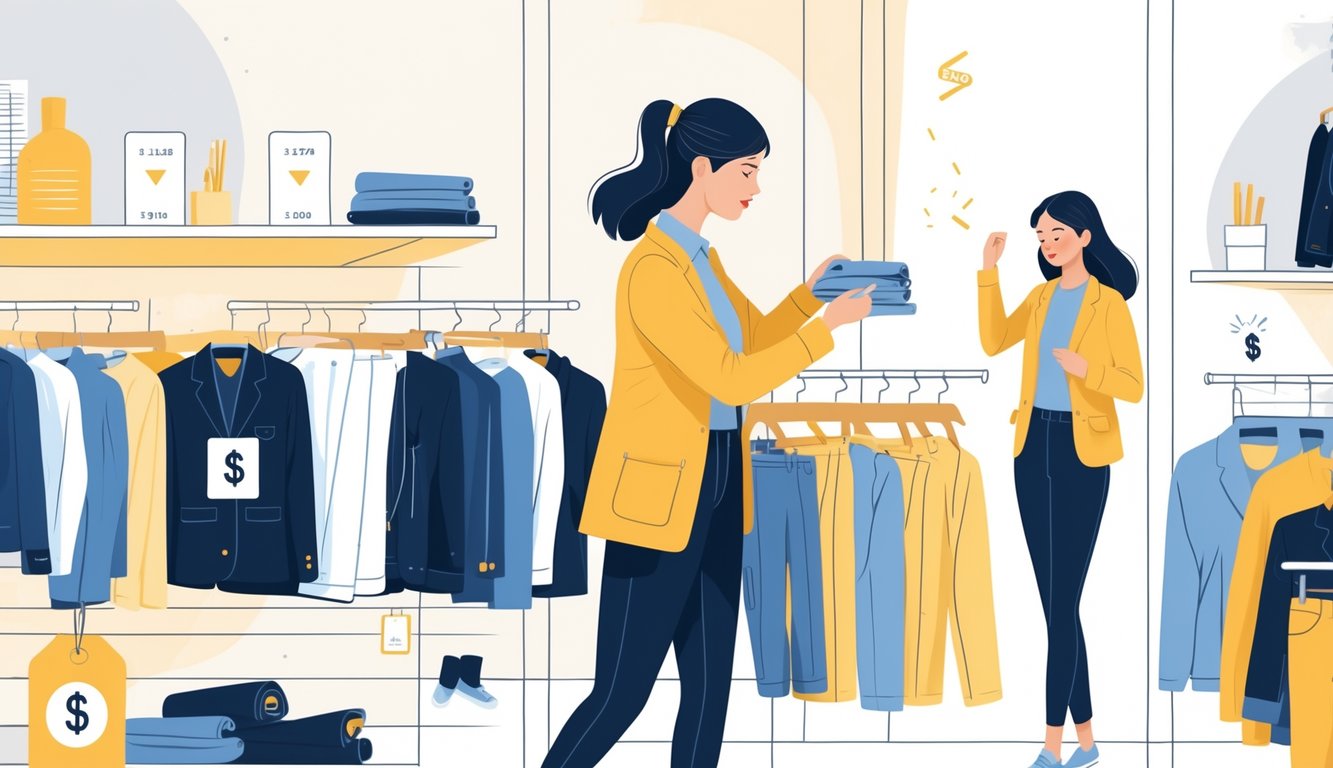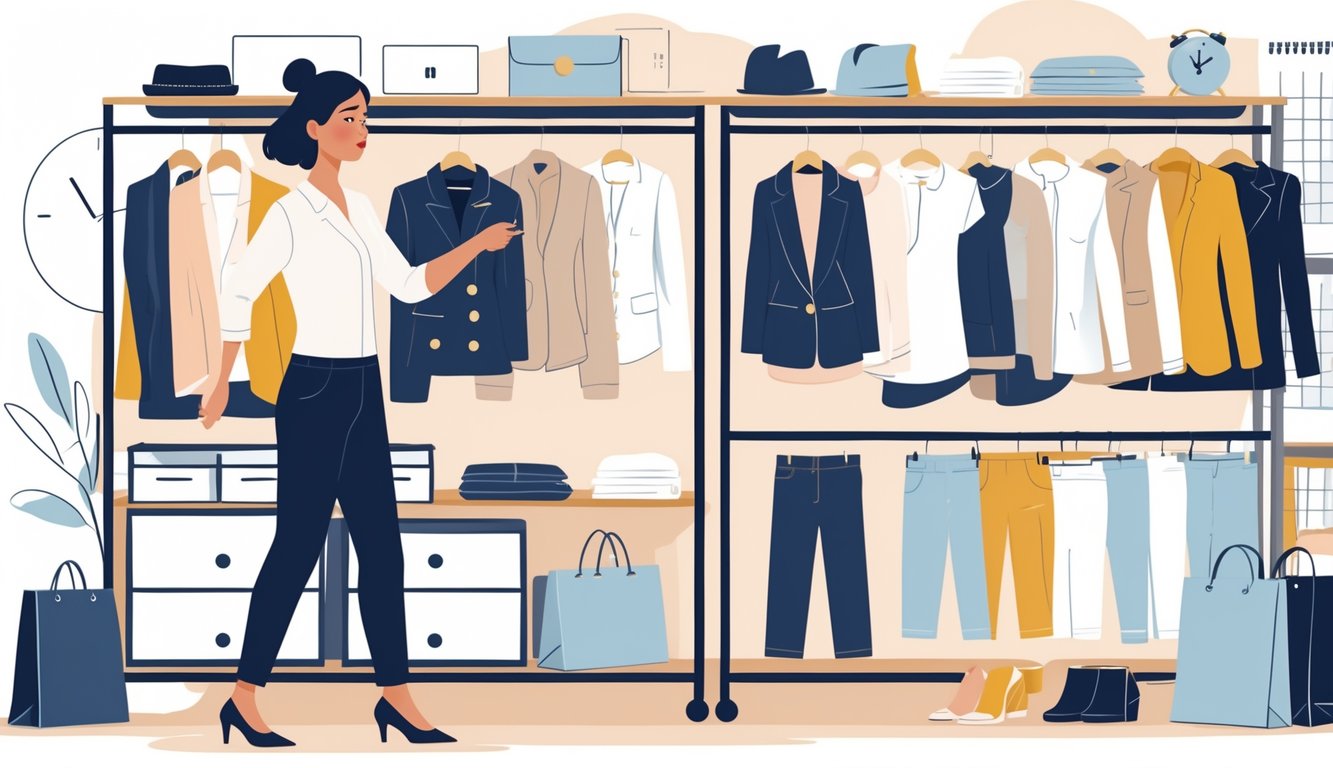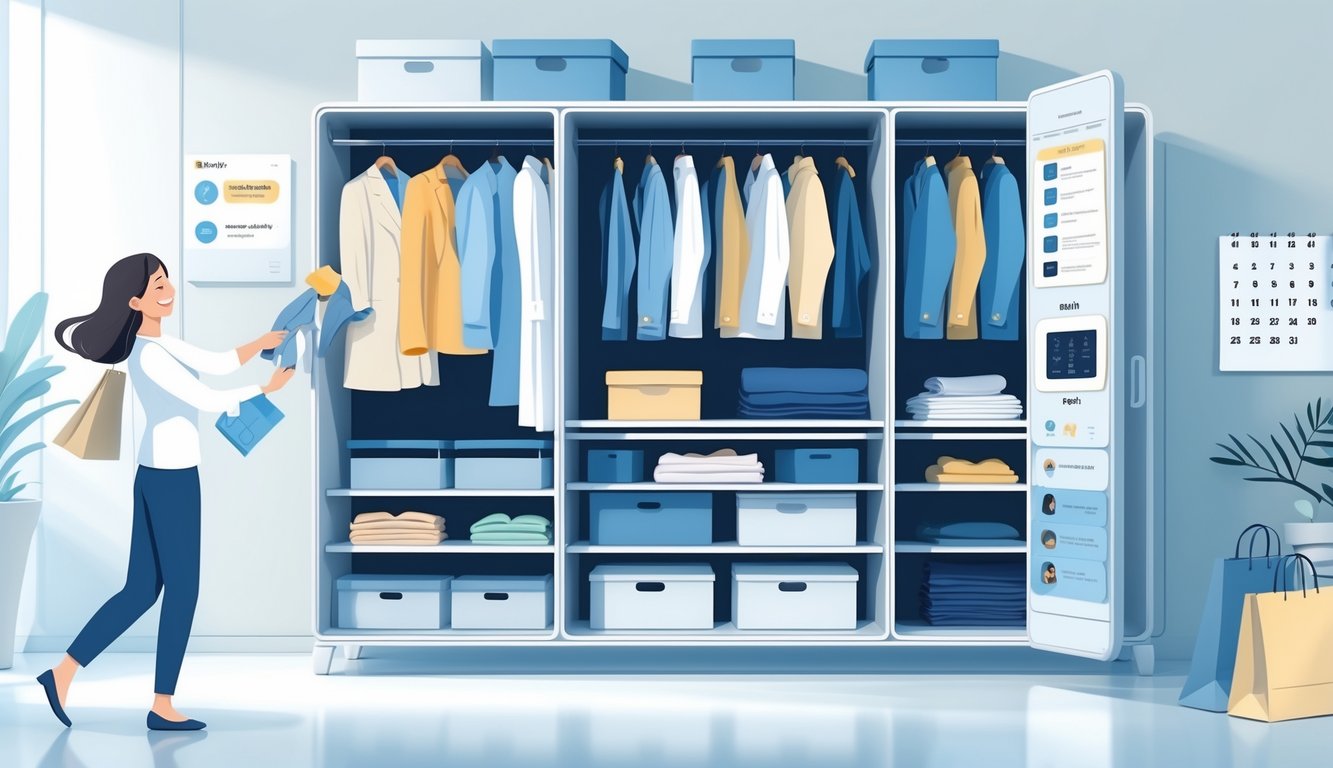
The Benefits of Clothing Swaps
Trying to jam new clothes into my closet, I keep asking myself why I’m buying so much. Swaps totally flip the script—suddenly “new” just means “new to me.” Real savings, less landfill guilt, and, weirdly, you meet people you’d never talk to otherwise. Sometimes that’s a plus, sometimes not.
How Clothing Swaps Work
I stumble into the rec center with a bag of ex-favorites—Banana Republic blouse, jeans that shrank (or did I just grow?), whatever. Everyone dumps their stuff on tables. Some people clearly skipped laundry day. No price tags, no one hustling you, just a free-for-all. Rules are basic: bring clean clothes, take what you want, don’t be that person who dumps a trash bag of junk, and, please, no single socks.
It hits me every time—Americans toss more than 100 pounds of clothes a year (EPA says so), but here, it’s like the cycle pauses for a minute. I tried to explain this to Jenna, who thinks “vintage” is code for “smells weird.” But swaps are actually chipping away at the 10% of global carbon emissions from fashion, or so Conscious Life & Style claims. Maybe that’s true, maybe it’s just a nice thought. At least I’m not buying another pair of leggings I’ll hate in a month.
Finding Local Swap Events
Does every Facebook event end up canceled, or is that just me? I check library boards—usually right next to lost cat flyers and overdue tax reminders. Big cities have quarterly swaps, but you have to dig through Eventbrite or city green pages to find them. Thrift shop managers will sometimes tip you off if you ask, but they act like it’s a secret.
Parent groups, especially PTAs, are obsessed with baby clothes swaps. Makes sense—who wants to drop $40 on a onesie for three weeks of use? Gen Z’s running better Instagram pages for this than any charity, but it’s always in a school gym at some inconvenient hour. I started bugging friends to do these at work. Less small talk, less guilt, more room in my closet.
Virtual Clothing Swap Options
Someone said online swaps would flop, but I traded a blazer on Swap Society last month. Their credit system is…confusing, but it works. Not as instant as in-person, but if your photos aren’t blurry, you’ll get matches. Why can’t Zoom calls be this efficient? Private Facebook groups and email lists still rule for people who don’t trust shipping or porch pirates.
It’s wild—people went from scribbling trades on Google Sheets to using swap “currency” and peer reviews. A Swap.com admin told me, “Biggest problem? People lying about waist size.” No one wants to admit that. Still, I’ve scored brands I’d never pay full price for, and it’s killed my urge to impulse-buy just to fill the “business casual” void. Weirdest thing: I haven’t bought a single new sweater in five months, which probably saved me $200 and a few pounds of landfill cotton.
Selecting Smart Wardrobe Essentials

My last tee disintegrated after two washes—should’ve just bought merino and been done with it. Swapping strategically means I skip the “cheap, replace, repeat” trap. Natural fibers, actual durability, a little personality—none of it’s rocket science, unless polyester tries to convince you otherwise.
Investing in Quality Natural Fibers
T-shirts shouldn’t pill in a month. I check tags like a maniac—“100% cotton,” “linen blend”—because synthetics are a scam. The Woolmark Company (yes, they exist) says merino lasts 20+ years. Synthetics? Three, if you’re lucky.
Same for socks. Stylists like Stacy London always say: go natural, own less, stay comfy. Bamboo shows up on labels now, but I’ve never found it better than linen when it’s hot. Ever tried to get the stink out of polyester? Nightmare. Paying more upfront saves me from endless “clearance” panic-buys. Who wants to shop landfill bins, anyway?
And that “wrinkles too much” excuse? Not true if you just air dry—tailors will back me up. That’s why I swapped almost everything—tees, underwear, cardigans—for natural fibers. My laundry routine’s finally not a disaster. If my tailor says a shirt lasts five times longer and shrugs off stains, I’m convinced.
Choosing Timeless Pieces
Trends change, my closet throws a fit, and suddenly I’m stuck with pinstripe cargos and sequins. Capsule wardrobe people (Marie Kondo, spreadsheet queen) say stick to denim jackets, black trousers, button-ups. Not exciting, but I’m not chasing “exciting,” I just want stuff that works.
I started forcing myself to only buy things I can style five ways. That’s why Harper’s Bazaar editors love trench coats and blazers. Statement neon? No thanks. My navy blazer’s survived more seasons than any influencer’s matching set.
Cost per wear, according to Jennifer Baumgartner (fashion analyst-slash-psychologist), should be a thing. The lower, the better. So I stopped buying party-only stuff that collects dust after one night out.
Adapting to Personal Style Changes
Swapping clothes is chaos until you realize your style keeps mutating. Am I a minimalist or do I just like loud shirts? I see Poshmark people trading cardigans for shackets—not because of TikTok, just because the weather’s weird.
Last year, I ditched every stiff suit and replaced them with wide-leg pants and soft jackets. There’s something freeing about ignoring “must-have” lists and just wearing what’s comfortable. The New York Times says 40% of people change style every year (feels low to me).
I watch what I actually wear, not what Instagram says. Every season, I make a note—what didn’t leave the hanger? Out it goes. In come natural fibers, stuff that works for more than one season, and one old band tee that nobody’s prying from my hands.
Efficient Storage Solutions for Swapped Wardrobes

I keep tripping over boots that should’ve migrated to storage months ago. Why is it so hard to stash off-season stuff without losing half my closet? Plastic bins just eat up space and somehow multiply.
Optimizing Small Spaces
Stacking shoes vertically? Didn’t make sense until I saw someone use an over-the-door rack. Twelve bucks, and now I’m not stepping on sneakers. Slide-out drawers for tiny closets jam constantly, but a basic shelf actually helps me keep shirts in line. Not a miracle, but better than letting piles take over.
Double hang rods—sounds dumb, but The Container Store swears it adds 33% more space. I tried it, and yeah, it works. Velvet hangers? Fine, they actually stop stuff from sliding. But label makers? Total lifesaver when seasons change—sweaters up high, tees down low, less time staring at clothes and getting annoyed. My neighbor says custom shelves paid for themselves: less ruined stuff, less panic-shopping, less screaming “where’s my bag” at 7 a.m.
Utilizing Vacuum-Sealed Bags
Vacuum-sealed bags. The plastic ones, not the fancy ones with logos. Someone from the National Association of Professional Organizers said on NPR (January 2024, I checked, but honestly, who even remembers what they said on NPR?) that you can supposedly double your closet space if you stuff your puffy coats and duvets into these airless plastic cocoons. I tried it last year. They do free up space, sure, and for some reason, I felt less guilty about hoarding seven nearly identical sweatshirts.
Almost lost my favorite scarf to the vacuum, though. Don’t do that. Leave the accessories out, only seal up stuff you’re absolutely sure you won’t want until Halloween or whatever. The upside? Dust and bugs can’t get in, so my allergy-prone family stopped sneezing every time the weather changed. Downside: good luck finding anything you didn’t label. Suddenly you’re wrestling six identical plastic blobs, all of them containing mysteries. I stick sticky notes on mine with months scrawled on them—April to September, etc.—and honestly, it’s the only reason I don’t end up tearing open every bag just to find one swimsuit. Oh, if you’re putting them in the garage, double-seal or something. Otherwise, mice will chew through. Ask me how I figured that out. Or don’t.



